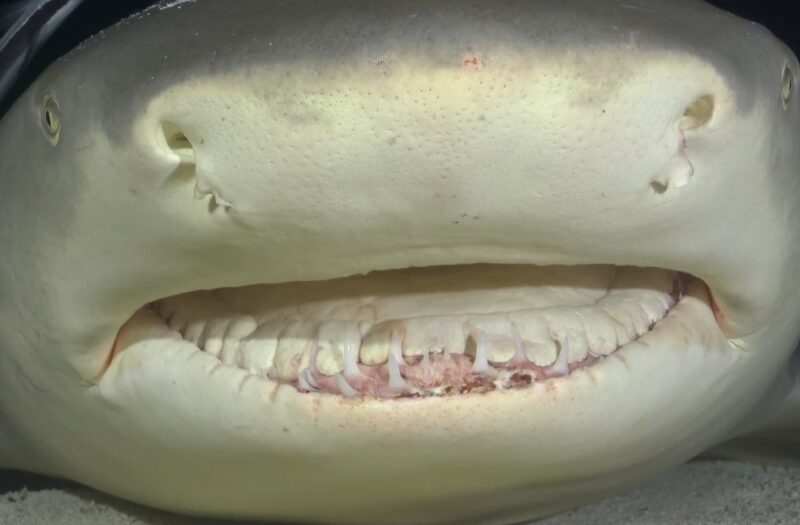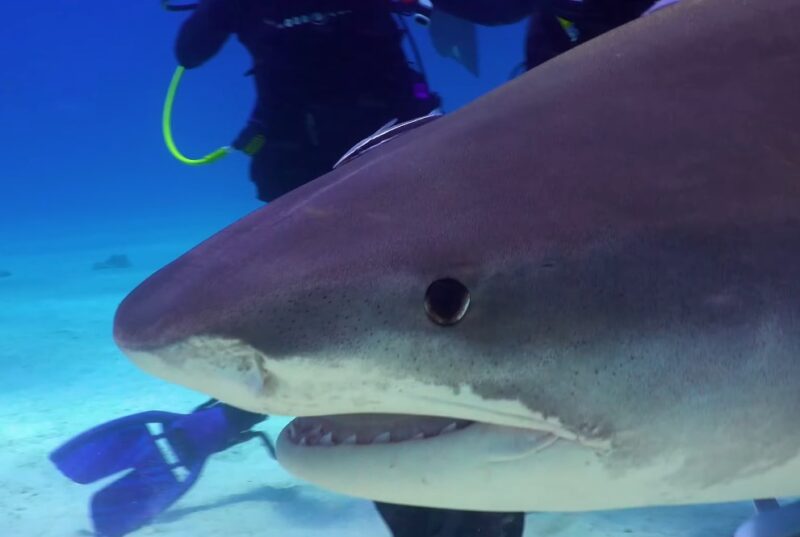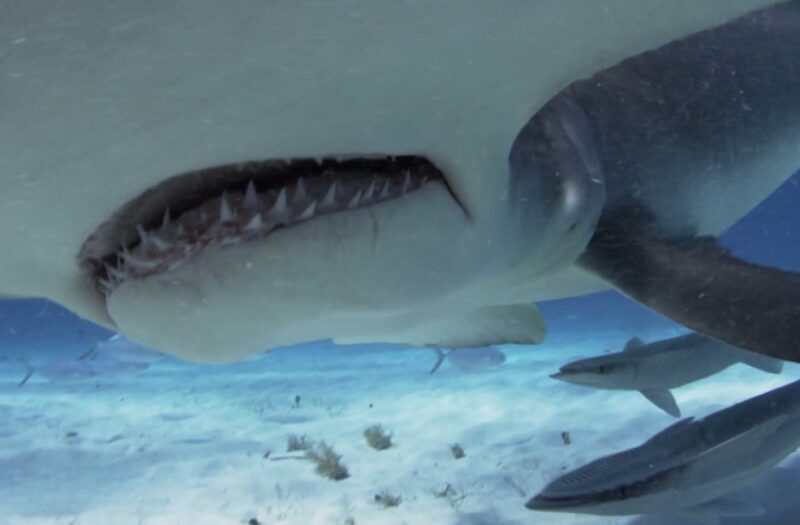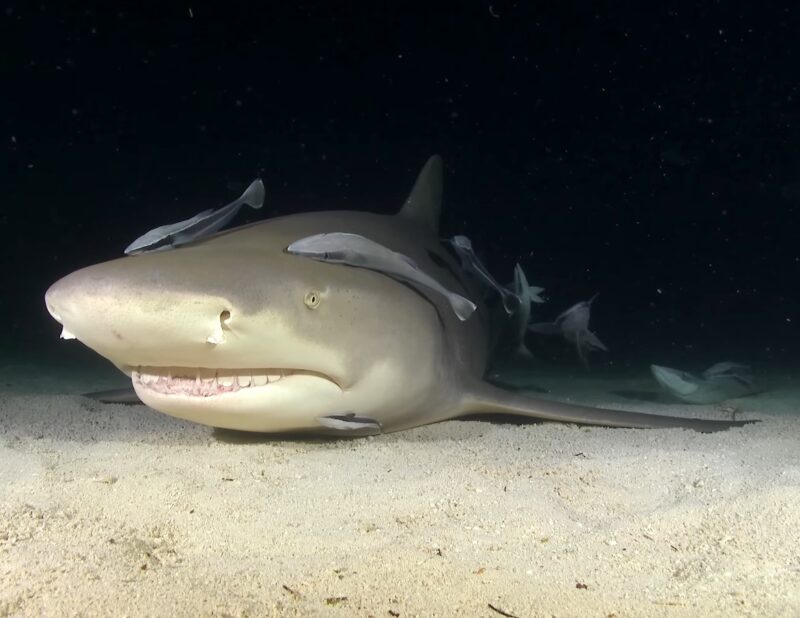Sharks are one of the most fascinating creatures on the planet. They have been around for over 400 million years, and they have adapted to live in a wide variety of marine environments. One of the most common questions about them is whether or not they have tongues.
The answer is yes, sharks do have tongues. However, theirs are not like the tongues of humans or other mammals. Sharks’ tongues are made of cartilage, and they are not attached to their jaws. This means that they cannot move them the way that we can.
Despite their lack of mobility, sharks’ tongues still play an important role in their feeding and swallowing. The tongue helps to hold food in place while the shark bites and tears it apart. It also helps to push food down the shark’s throat.
In this blog post, we will explore the hidden depths of shark tongues. We will learn about their anatomy, their functions, and the different types of shark tongues. We will also discuss some of the misconceptions about shark tongues.
Anatomy

The tongue’s primary material is cartilage, a tough yet flexible tissue. This gives the tongue its distinct structure and durability. Interestingly, this cartilaginous makeup isn’t exclusive to the tongue; the entire skeletal framework of sharks is cartilaginous, setting them apart from bony fishes and other vertebrates.
Ceratohyals – The Anchors
Embedded at the base of the tongue are two small bones named the ceratohyals. These bones act as anchors, holding the tongue firmly to the floor of the shark’s mouth.
Their presence ensures that the tongue remains stable, especially during feeding.
Skin Layer and Papillae
Enveloping the tongue is a fine layer of skin, which in some species can be almost see-through. Sprinkled across this skin are minuscule bumps or papillae. Far from being mere decorative features, these papillae play a pivotal role during feeding.
They latch onto the prey, preventing it from escaping the shark’s formidable bite.
Taste Buds – The Flavor Detectors
Embedded in the tongue are the taste buds, which allow sharks to discern different flavors in their food. However, not all shark tongues are created equal in this regard.
The distribution of these taste buds varies among species. Some sharks have a tongue teeming with taste buds, while in others, they are concentrated only at the tips.
This disparity in taste bud distribution hints at the varied dietary habits and preferences across different shark species.
Functions and Roles of a Shark’s Tongue

The tongue of a shark, while not as versatile as that of many terrestrial animals, plays a pivotal role in the creature’s survival.
1. Feeding and Swallowing
The primary role of the shark’s tongue is to aid in its feeding process. The tongue’s design, coupled with the papillae, ensures that prey is held securely. Once the shark has taken a bite, the tongue assists in pushing the food down the esophagus and into the stomach.
2. Taste Sensation
Beyond its mechanical role in feeding, the tongue is instrumental in the gustatory system of sharks. With their taste buds, they can discern different flavors, enabling them to be selective about their diet. This ability to taste ensures that sharks consume nutritionally rich prey, optimizing their energy intake.
3. Maintaining Balance
An often-overlooked function of the shark’s tongue is its contribution to the creature’s balance. Positioned at the front of the mouth, the tongue acts as a counterbalance, helping maintain the shark’s head in an upright position. This equilibrium is vital, especially when sharks are on the prowl, ensuring they swim straight and maintain focus on their prey.
Diversity

Sharks, with their vast array of species, exhibit differences even in the anatomy of their tongues. Broadly, shark tongues can be categorized into two primary types: free-floating and attached.
1. Free-floating
- Description: As the name suggests, these tongues are not anchored to the jaws and possess a degree of mobility within the mouth. Their unattached nature allows them to move, albeit not as flexibly as human tongues.
- Species with Free-floating Tongues: This type of tongue is prevalent among many shark species. Iconic sharks like the great white, the distinctive hammerhead, and the formidable tiger shark all possess free-floating tongues. Their tongues play a role primarily in feeding, assisting in holding, and guiding food.
2. Attached
- Description: Contrary to free-floating tongues, attached tongues are firmly anchored to the jaws. Their movement is considerably restricted due to this attachment.
- Species with Attached Tongues: While less common, some of them do possess attached tongues. Notable examples include the gentle nurse sharks and the colossal whale sharks. Their feeding habits, especially filter feeding in the case of whale sharks, might explain the evolutionary reason behind such an attachment.
Debunking Myths

Sharks, being the mysterious creatures they are, have been subjects of numerous myths and misconceptions. Here are some clarifications regarding their tongues:
- Breathing Mechanism: A prevalent myth is that sharks utilize their tongues in the breathing process. In reality, sharks respire through their gills. The tongue has no involvement in the extraction of oxygen from water.
- Swimming Aid: Another misconception is the role of the tongue in aiding sharks’ swimming. This is far from the truth. Sharks rely on their streamlined bodies, powerful tails, and fins for propulsion and navigation. The tongue remains a bystander in the swimming process.
- Prey Capture: While the tongue does play a role in holding and guiding food, it’s not an active participant in the capture of prey. The belief that all sharks use their tongues in hunting is inaccurate. The method of prey capture varies among species, with some using their tongues more actively than others. However, the primary tools for hunting remain the shark’s keen senses, speed, and razor-sharp teeth.
While discussing the unique features of sharks, like shark tongues they also have a distinct reproductive method—laying eggs, which you can learn more about by visiting this source.
FAQ
Do all sharks have tongues?
No, not all sharks have tongues. Some shark species, such as the whale shark and the basking shark, do not have them.
They have a filter-feeding mechanism that allows them to extract plankton and other small organisms from the water.
How do sharks taste food?
Sharks have taste buds on their tongues, but they also have taste buds on their lips, gums, and throat. This allows them to taste food even before they swallow it.
They also have a keen sense of smell, which helps them to find food.
How do sharks use their tongues to catch prey?
Some shark species, such as the cookie-cutter shark, use their tongues to help them catch prey. The cookie-cutter shark has a long, narrow tongue that is covered in sharp teeth.
The shark uses its tongue to latch onto its prey and then suck out the flesh.
Final Words
Shark tongues are fascinating and important organs. They play a vital role in the feeding and swallowing of sharks. They also help to maintain the shark’s balance and taste of food.
Despite their importance, they are often misunderstood. There are a number of common misconceptions about shark tongues, such as the belief that they are used for breathing or swimming.
Related Posts:
- Do Sharks Lay Eggs? Facts On Shark Eggs & Mermaid’s Purses
- Why Do Moose Have Antlers? - From Decoration to Weaponry
- How Many Stomachs Does a Cow Have? - Explained!
- Do Bears Have Tails? - Find Out the Truth Here
- Do Female Deer Have Antlers? - A Rare and Remarkable Feature
- Why Do Rats Have Tails? These are the Three Main Purposes








